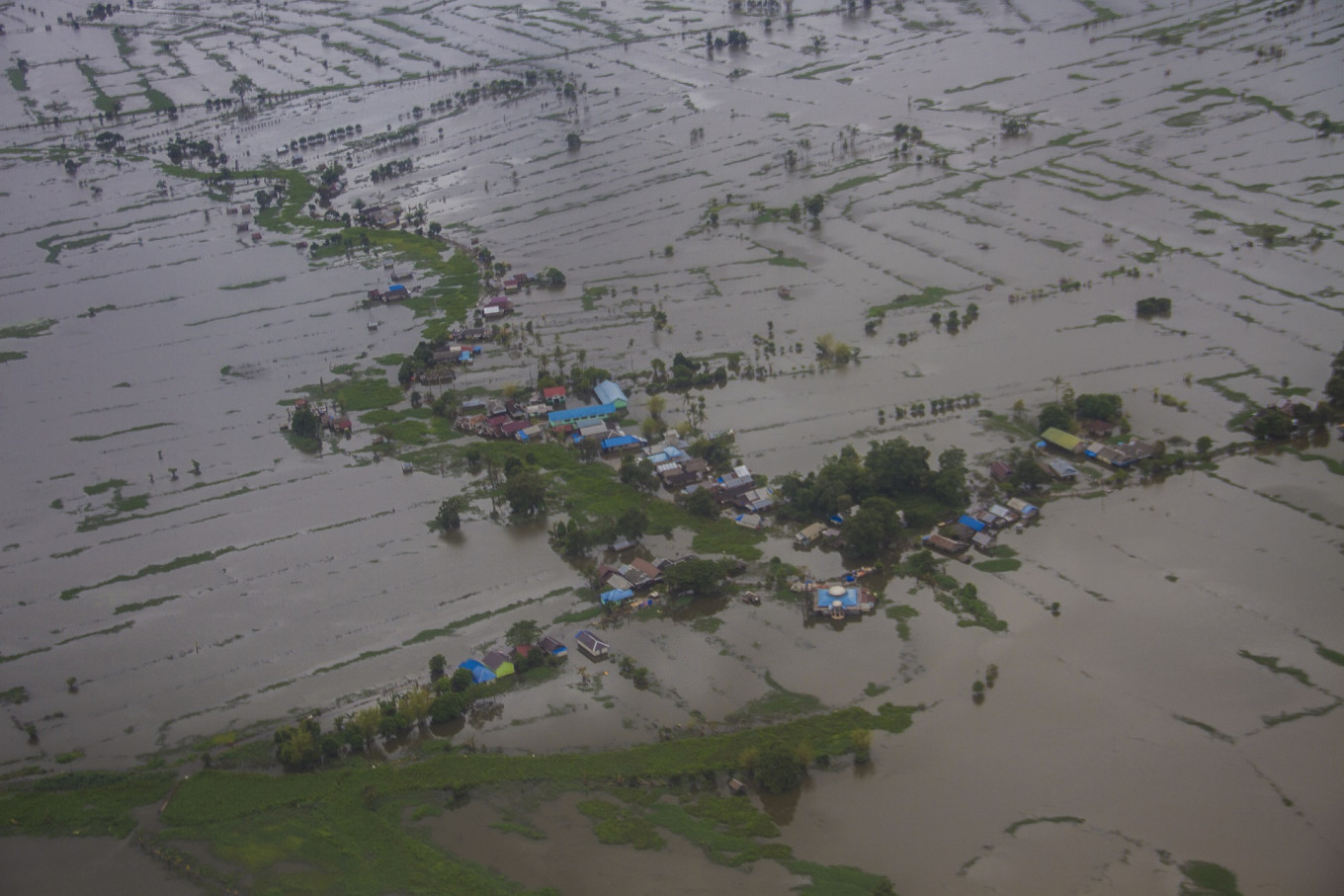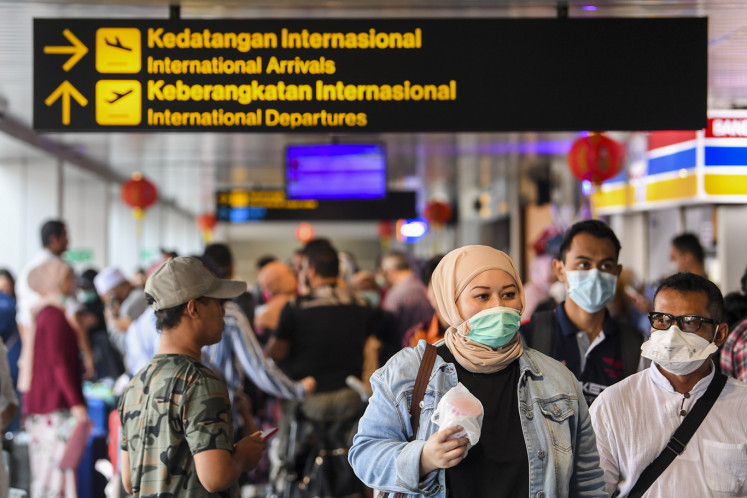Popular Reads
Top Results
Can't find what you're looking for?
View all search resultsPopular Reads
Top Results
Can't find what you're looking for?
View all search resultsIndonesia braces for more weather disasters. Climate crisis will make them worse.
Comparative data over the past few decades indicate that the rate and frequency of weather hazards have been increasing across the archipelago, with the intensity of disasters worsening due to climate change.
Change text size
Gift Premium Articles
to Anyone
 Floodwaters inundate rice fields in Banjar regency on Jan. 28, 2021, after weeks of heavy rainfall in South Kalimantan. The South Kalimantan Disaster Mitigation Agency (BPBD) records show that the weather disaster left 48,714 hectares of rice fields flooded in 11 out of 13 regencies in the province. (Antara/Bayu Pratama S.)
Floodwaters inundate rice fields in Banjar regency on Jan. 28, 2021, after weeks of heavy rainfall in South Kalimantan. The South Kalimantan Disaster Mitigation Agency (BPBD) records show that the weather disaster left 48,714 hectares of rice fields flooded in 11 out of 13 regencies in the province. (Antara/Bayu Pratama S.)
T
he series of weather disasters Indonesia experienced in early January could indicate that the country faces an increased risk of hydrometeorological hazards amid the ongoing climate crisis.
Authorities are urged to adapt disaster preparedness and mitigation measures in alignment with the potential for higher risk, but have been hindered by a limited capacity to brace against future catastrophes.
Data from the National Disaster Mitigation Agency (BNPB) show that Indonesia experienced a rising number of hydrometeorological disasters from 2015 to 2020, six of the hottest years on record according to the World Meteorological Organization (WMO).
BNPB recorded 1,664 disasters in 2015 and then saw the figure increase over the next four years to 3,810 in 2019, with the figure dropping slightly to 3,023 last year.
Indonesia distinguishes hydrometeorological hazards under two categories: wet extreme events comprising floods, landslides and whirlwinds, as well as extreme waves and coastal erosion, and hot extreme events comprising wildfires and droughts.
Wet extreme events dominate the data, led by floods and whirlwinds. In 2020 alone, the country saw 1,138 floods and 902 whirlwinds.















